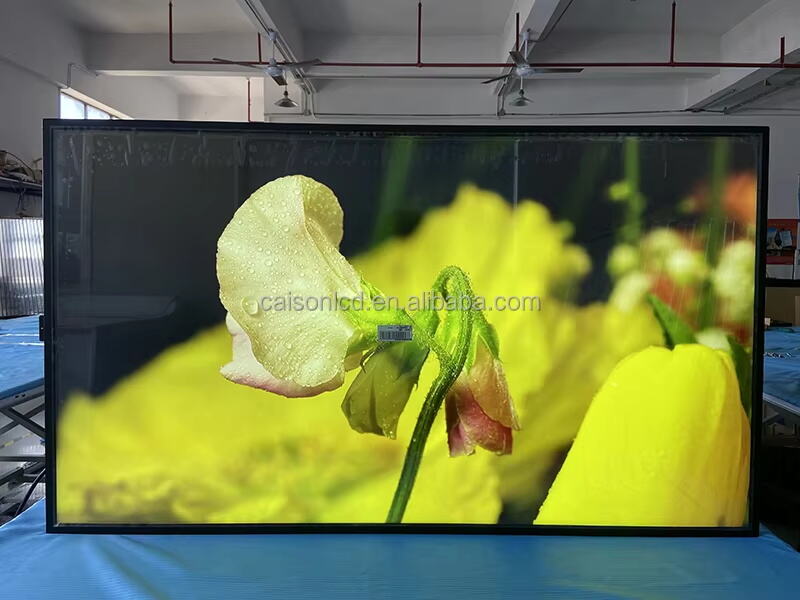Strategisk översikt och kärnprioriteringar för en framgångsrik drift
Ett välplanerat Digital skyltning projekt börjar med tydliga mål och en operativ syn. Innan du väljer skärmar eller programvara, definiera vad den digitala skyltningen ska uppnå: öka försäljningen, ... Digital skyltning installationen bör uppnå: öka försäljning, förbättra orientering, effektivisera drift eller förbättra gästupplevelsen. Beakta målgrupp, betraktningsavstånd och typiskt omgivande ljus i de platser där digital skyltning kommer att användas. Tidiga beslut om huruvida den digitala skyltningen huvudsakligen ska vara informativ, transaktionell eller kampanjartad kommer att styra valet av hårdvara, innehållsfrekvens och nätverksarkitektur. Budgetplanering bör innefatta inte bara en engångsinvestering i hårdvara och installation utan också fortsatta kostnader för digitalt innehållsproduktion, programvarulicenser och underhåll. Lika viktigt är styrning: tilldela en ansvarig för innehåll, en IT-ansvarig och en leverantörskontaktperson så att innehållsuppdateringar, säkerhetsuppdateringar och serviceärenden hanteras snabbt. När mål, operativa roller och budgetar är fastslagna blir inköp och platsundersökningar mycket mer riktade och effektiva, vilket minskar överraskningar under installationen och förkortar tiden till att din digitala skyltningsprogram är i drift.
Platsundersökning och miljöbedömning
Fysiska förhållanden och synlinjeanalys
En detaljerad platsundersökning är avgörande för varje installation av digital skyltning. Mät betraktningsavstånd, takhöjder och synlinjer för att välja lämplig skärmstorlek och upplösning. Notera reflekterande ytor, direkt solljus och belysning på natten så att du kan ange rätt ljusstyrka och anti-bländningsegenskaper för skärmar i digital skyltning. Beakta hur fottrafik och synlinjer förändras under olika delar av dagen för att säkerställa att innehållet i digital skyltning förblir läsbar och synlig under hela användningscykeln.
El, monteringszoner och säkerhetskontroller
Identifiera närliggande strömkällor, fördelningsboxar och strukturella upphängningspunkter innan du specificerar monteringslösningar. Bekräfta att vägg- och takkonstruktioner kan bära skärmarnas och inkapslingarnas vikt. Ta hänsyn till kodkrav på avstånd och nödutgångar för att säkerställa att digitala skyltar inte skapar säkerhetsrisker eller bryter mot byggregler. Tidig samordning med fastighetsansvariga minskar behovet av omarbete under montering och kablage.

Maskinvaruval och integration
Val av skärmar och mediaspelare
Välj skärmar och mediaspelare som passar användningsområdet för digitala skyltar: inomhus eller utomhus, porträtt eller landskap, fasta eller interaktiva. Kommersiella skärmar erbjuder bättre driftsäkerhet och garanti än konsument-tv-apparater och innehåller ofta funktioner som förenklar hanteringen av digitala skyltar. Anpassa mediaspelare till skärmarnas upplösning och codec-stöd för att undvika problem med innehållsuppspelning och säkerställa smidig drift över hela skyltnätverket.
Monteringslösningar, inkapsling och skärmning mot obehörig påverkan
Använd VESA-kompatibla fästen och väderbeständiga höljen där det behövs för att skydda Digital Signage-hårdvara. För skärmar som är tillgängliga för allmänheten bör du överväga låsbara höljen och skruvar som skyddar mot manipulering. Höljena bör säkerställa tillräcklig ventilation för värmeavledning och korrekt kabelhantering samtidigt som de möjliggör enkel serviceåtkomst för underhållstekniker.
Nätverksarkitektur och cybersäkerhet
Segmentering och bandbreddplanering
Digital Signage bör köras på logiskt segmenterade nätverk för att begränsa sidorörelse i händelse av en kompromat. Allokera tillräcklig bandbredd för innehållsuppdateringar och direktsända strömmar, och planera för toppar i uppdateringsfrekvensen så att distribution av Digital Signage-innehåll inte orsakar nätverkskonstipation i kärnnätverken. Använd VLAN, brandväggar och inställningar för tjänstekvalitet (QoS) för att prioritera kritisk trafik från skyltning och skydda det övergripande företagsnätverket.
Säker enhetskonfiguration och uppdatering
Upprätta säkra etableringsförfaranden för varje Digital Signage-slutpunkt: unika autentiseringsuppgifter, enhetscertifikat och registrering i en hanteringsplattform. Upprätthåll en regelbunden takt för uppdatering av mediaspelare och skärmfirmvara samt testa uppgraderingar i en mellanlagringsmiljö innan de distribueras. Säker etablering och regelbunden uppdatering minskar risken för kända sårbarheter som kan äventyra tillgängligheten för Digital Signage.
Innehållsstrategi och uppspelningspålitlighet
Innehållsdesign för läsbarhet och effekt
Designa innehåll utifrån betraktningsavstånd och den vanliga vistelsestiden för varje Digital Signage-plats. Använd tydlig typografi med hög kontrast, korta meddelanden och begränsad användning av rörelse för att fånga uppmärksamheten utan att överväldiga tittarna. Planera scheman för olika dygnstider så att innehållet i Digital Signage anpassas efter kundernas avsikter – frukostmenyer på morgonkvisten och kampanjer under eftermiddagslullar, till exempel.
Caching, schemaläggning och redundansuppspelning
Implementera lokal caching på mediaspelare så att digital skyltning fortsätter att visa innehåll även vid nätverksavbrott. Använd schemaläggningsverktyg som tillåter akuta överskrivningar och nödmeddelanden. För kritiska skärmar konfigurerar du redundanslistor och lägen för offline-innehåll för att säkerställa att digital skyltning förblir användbar även vid driftavbrott.
Installationens logistik och igångsättning
Professionell montering och kabelförvaltning
Anlita erfarna installatörer som förstår lokala regler och strukturella överväganden. Korrekt dolda kablar och noga organiserade kabelföring förbättrar inte bara estetiken utan minskar risken för oavsiktlig skada och förenklar framtida underhåll. Märk alla kablar och dokumentera de faktiska placeringarna för att snabba upp felsökning för servicepersonal inom digital skyltning.
Checklista för igångsättning och godkännandetester
Innan överlämning, gå igenom en startkontrolllista som verifierar skärmens ljusstyrka, färgkalibrering, mediaspelarens registrering, CMS-anslutning och schemalagd innehållsvisning. Testa fjärrhanteringsfunktioner och bekräfta att övervakningsvarningar skickas till supportteamen. Godkännandetester säkerställer att digital skyltning uppfyller prestandaförväntningarna från dag ett.
Underhållsplanering och livscykelhantering
Förebyggande underhållsintervall och förbrukningsartiklar
Definiera regelbundna underhållsintervall för digital skyltning: dammtorkning, filterrengöring, tätningar för utomhusenheter och kontroller av firmwarehälsa. Byt förbrukningsartiklar såsom HVAC-filter eller reservbatterier enligt en förutsägbar schema. Förebyggande underhåll minskar oförutsedd driftstopp och bevarar skärmarnas visuella kvalitet.
Fjärrövervakning och serviceavtal (SLA)
Distribuera fjärrövervakning som spårar spelarnas hälsa, visar temperaturer och innehållsuppdateringsframgångar. Ställ upp serviceavtal med leverantörer som anger svarstider och tidsfönster för reservdelsutbyte för digital skyltning. Fjärråtkomst kombinerat med tydliga SLA:er förbättrar drifttiden och minskar kundpåverkande fel.
Tillgänglighet, efterlevnad och innehållsstyrning
Överväganden kring ADA och tillgänglighet
Upprätta innehåll och interaktiva element för digital skyltning som uppfyller tillgänglighetsstandarder. Använd läsbara teckenstorlekar, stängda undertexter för videomaterial och se till att tryckpunkter är nåbara för rullstolsburna användare. Planering av tillgänglighet säkerställer att digital skyltning tjänar alla besökare och minskar rättsliga risker.
Arbetsflöden för innehållsgodkännande och varumärkessäkerhet
Införa innehållsstyrning med godkännandeflöden så att endast granskade tillgångar visas på digital skyltning. Använd rollbaserad åtkomst till innehållshanteringssystemet och behåll en granskningslogg över ändringar. Märkes säkra kontroller bevarar rykte och förhindrar oavsiktlig eller skadlig visning av innehåll.
Prestandaoptimering och analys
Mäta effekter och finjustera innehåll
Utstyra digital skyltning med analys för att spåra visningar, visningstid och konverteringsökning. Använd A/B-testning för att förbättra bilder och CTA:er. Datastyrd finjustering hjälper digital skyltning att leverera mätbara affärsresultat och stödja fortsatt innehållsinvestering.
Värmekartor och platsanalys för förbättrad placering
Kombinera digital skyltningsanalys med fottrafiksensörer för att skapa värmekartor som visar var skärmarna presterar bäst. Använd dessa insikter för att flytta skärmar med låg prestanda eller för att motivera ytterligare skyltning där kunderna visar störst uppmärksamhet.
Leverantörsval och upphandlingsstrategi
Att välja pålitliga leverantörer och säkerställa kompatibilitet
Välj leverantörer med beprövad erfarenhet inom digital skyltning, goda supportnätverk och öppna integreringsmöjligheter. Verifiera att föreslagna spelare, skärmar och CMS fungerar tillsammans och att dokumentation samt reservdelsstöd är tillgängligt. Kompatibilitet minskar framtida integreringsproblem och påskyndar felsökning.
Garantier, serviceavtal och TCO-fokus
Utvärdera garantier och valfria serviceavtal för att förstå långsiktiga kostnader. Modellera totala ägandekostnaden (TCO) för digital skyltningsprogrammet – inköp, installation, innehållsproduktion och underhåll – för att säkerställa att investeringen stämmer överens med förväntade avkastning.
Vanliga frågor
Vilka är de vanligaste installationsfallgroparna för digital skyltning
Vanliga problem inkluderar otillräcklig strömförsörjningsplanering, dålig siktlinjeanalys, att underskatta behovet av ljusstyrka i områden med starkt omgivande ljus samt otillräcklig nätverkssegmentering. Undvik dessa fallgropar genom att utföra noggranna platsundersökningar och involvera både drift- och IT-team tidigt i projektet.
Hur ofta bör Digital Signage-hårdvara underhållas
Indoor-skärmar som används i lätt trafik tål att man gör visuella kontroller kvartalsvis och årsvisa kontroller av firmware. Skärmar utomhus eller i intensiv användning kan kräva månatligt underhåll, särskilt för dammning, tätning och kylsystem. Anpassa underhållsfrekvensen efter miljön och användningsmönstret.
Hur kan jag minska driftstopp i mitt Digital Signage-nätverk
Använd fjärrövervakning, lokal cachelagring av innehåll, redundant media-avspelning för kritiska skärmar samt en vältestad process för uppdateringshantering. Tydliga SLA:er med leverantörer och en på plats existerande reservdelarlagring minskar också återställningstiden vid Digital Signage-fel.
Vilka metrik är viktigast för Digital skyltningssuccé
Viktiga metrik inkluderar upptid i procent, antal innehållsimpresioner, visningstid, konvertering eller ökning för främjade objekt och operativa metrik som publiceringstid för brådskande meddelanden. Genom att kombinera tekniska och affärsmässiga nyckeltal får man en komplett översikt av prestanda för digital skyltning.
Innehållsförteckning
- Strategisk översikt och kärnprioriteringar för en framgångsrik drift
- Platsundersökning och miljöbedömning
- Maskinvaruval och integration
- Nätverksarkitektur och cybersäkerhet
- Innehållsstrategi och uppspelningspålitlighet
- Installationens logistik och igångsättning
- Underhållsplanering och livscykelhantering
- Tillgänglighet, efterlevnad och innehållsstyrning
- Prestandaoptimering och analys
- Leverantörsval och upphandlingsstrategi
- Vanliga frågor

